#Masham
Explore tagged Tumblr posts
Text
Saint Mary the Virgin, Masham.
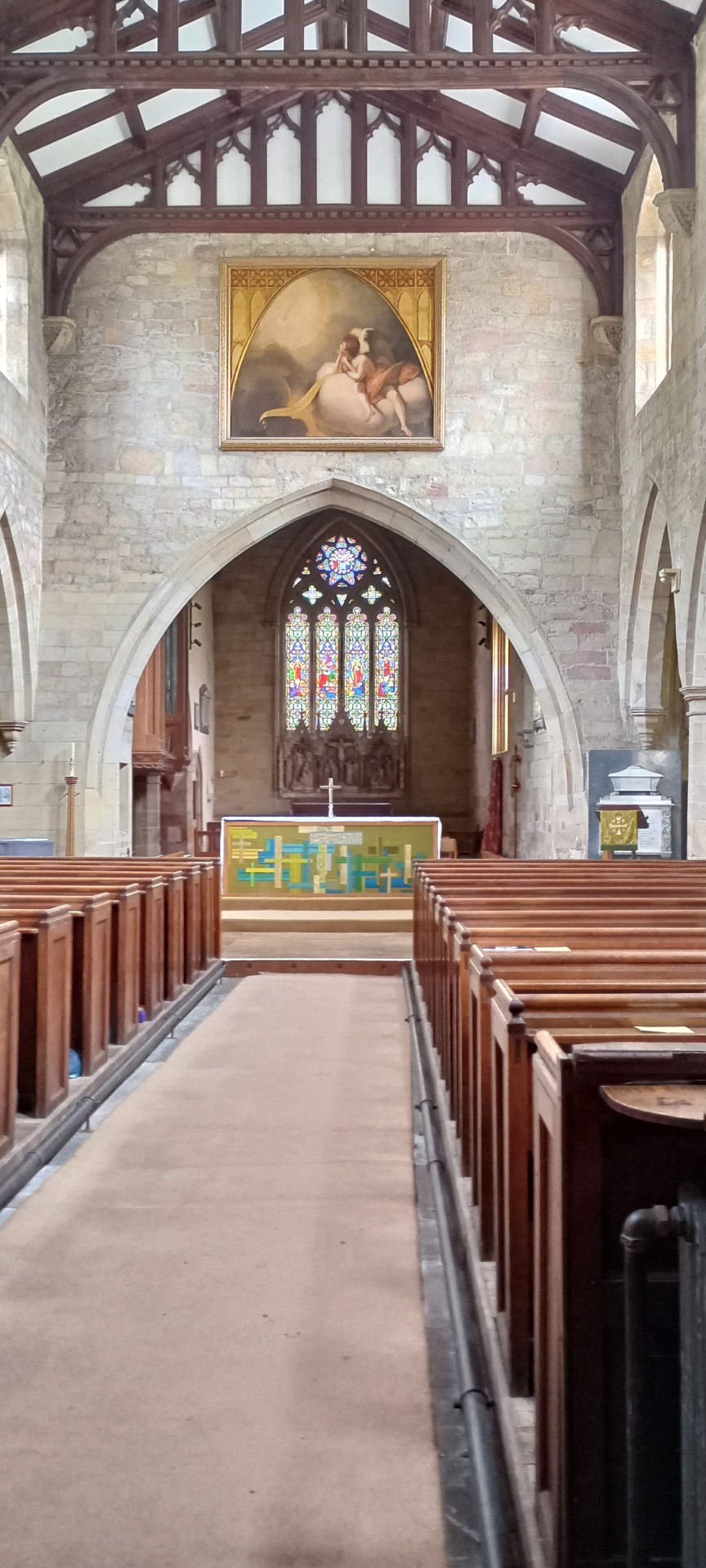

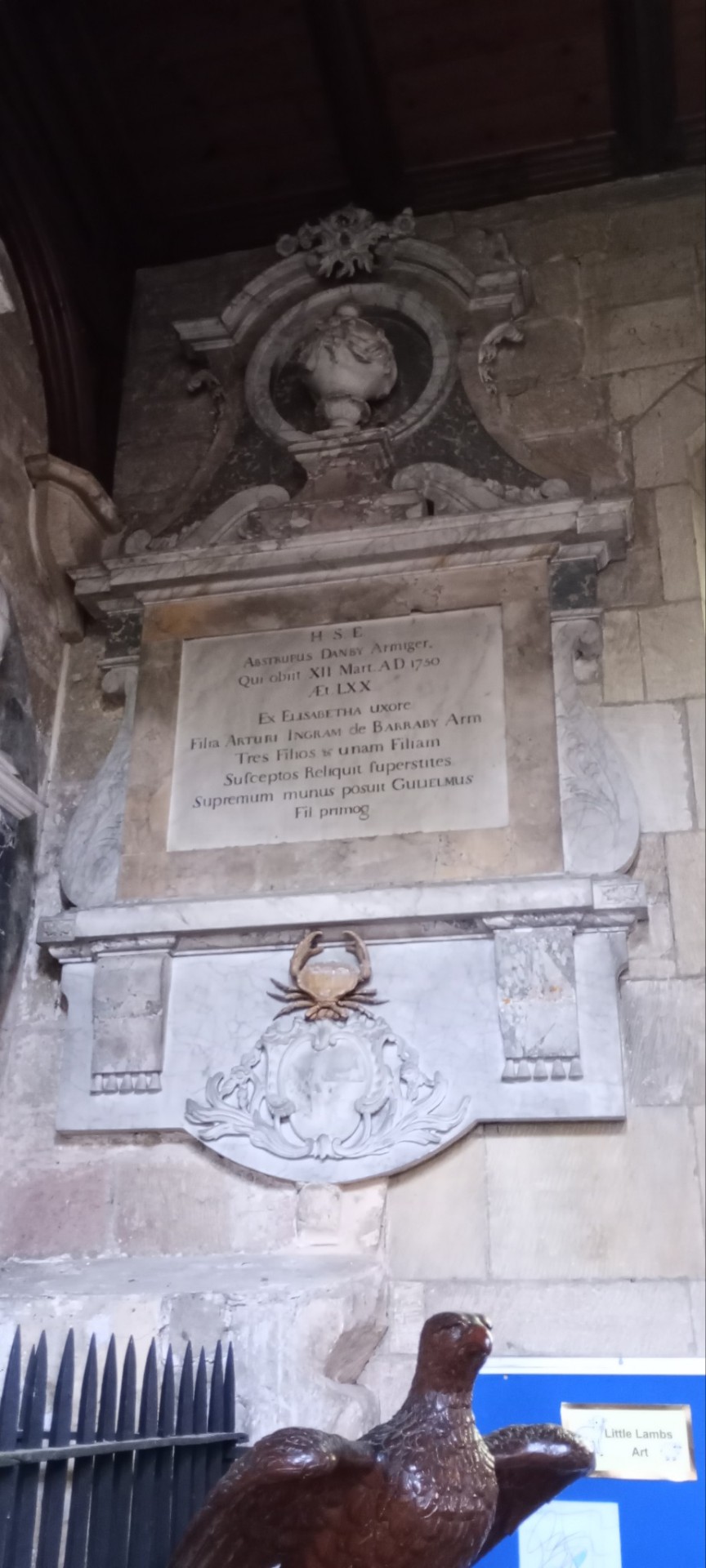
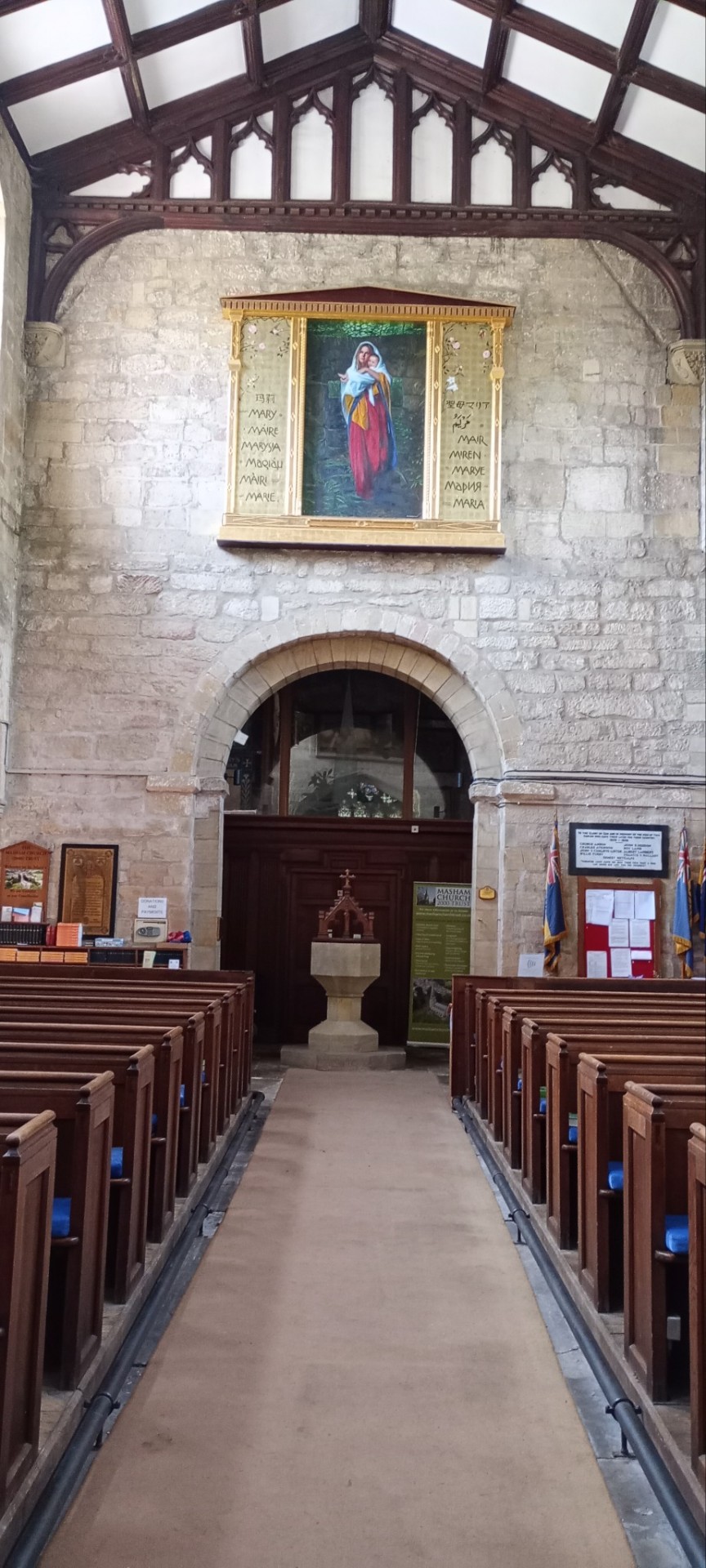

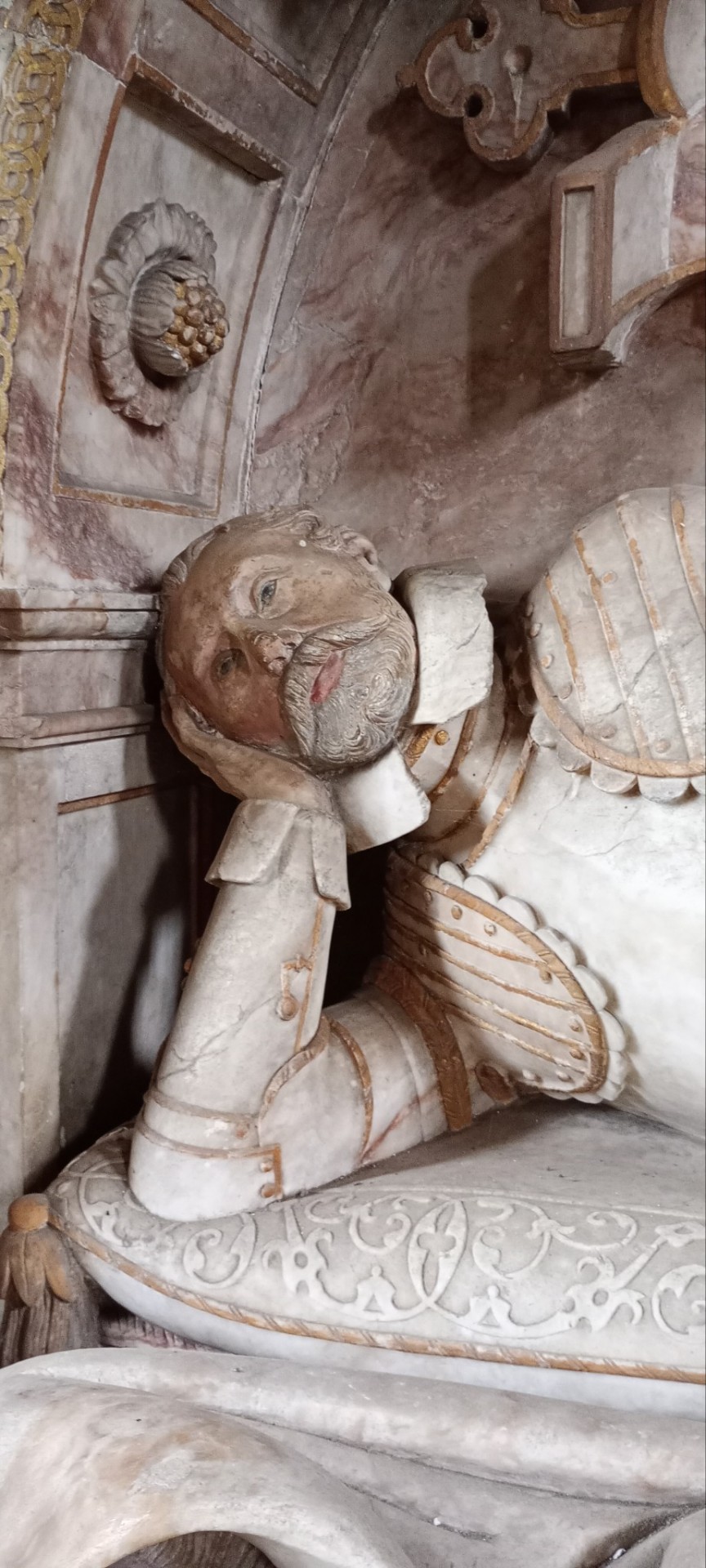

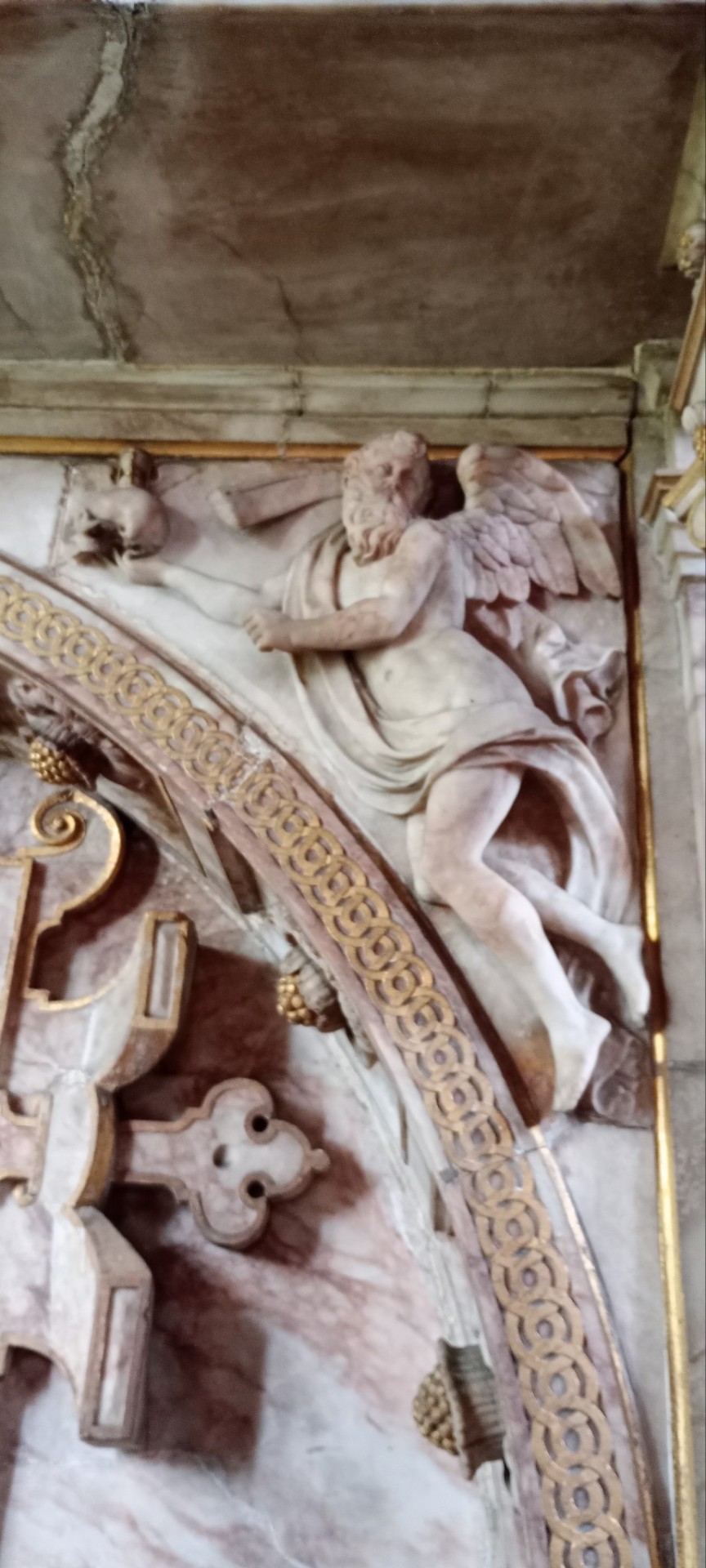
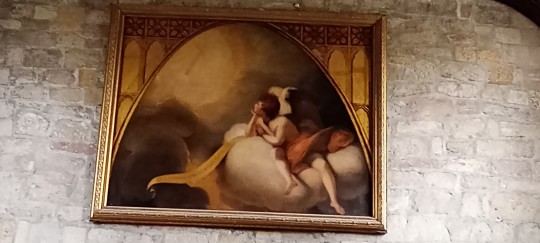

12 notes
·
View notes
Text

Masham (located in the upper left corner) in relation to York (lower right corner)
1 note
·
View note
Text
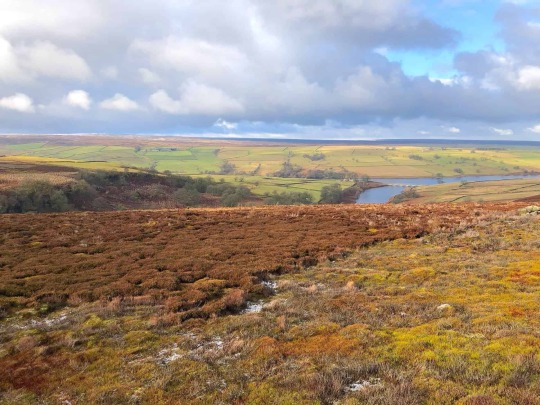









🚶♂️ Explore the stunning landscapes of North Yorkshire with my newly published Masham walk. This historical adventure takes you from the heart of Masham, home of the iconic T&R Theakston Ltd brewery, an emblem of the town's rich brewing heritage since 1827. 🍺
🌳 Venture westward across Fearby Low Moor, then enjoy the tranquility of the Sole Beck Gill valley before venturing out onto the sprawling beauty of Ilton Moor. Marvel at the breathtaking scenery around the Roundhill Reservoir dam, a highlight of this exhilarating walk. 🏞️
🏰 A must-visit is the 18th-century Druid’s Temple, nestled in the serene Druid’s Plantation woodland. This historical folly adds a mystical dimension to your walk which you'll enjoy. 🌲
🔄 Covering a total distance of 14½ miles, this circular walk is an ideal blend of history, culture, and natural beauty. Experience the essence of Nidderdale and the unique charm of Masham. 🥾
🗺️ Detailed maps and tools for the walk are available on my website, ensuring you have everything you need for this unforgettable experience. Plus, plenty of photos and statistics of the walk. 🌄
👉 Visit https://www.paulbeal.com/masham-walk now to start your adventure! Discover more details, download the GPX file, and get ready to explore! 🌟
0 notes
Text
The Grotto Temple, Masham, North Yorkshire
Just over the river Ure from the market town of Masham is this unusual rotunda sitting on top of a rustic grotto. It was designed to take advantage of the view over the river to the church and the attractive little town. An engraved stone near the temple tells us that in 1770 ‘Samuel Wrather built this grotto’. Continue reading Untitled
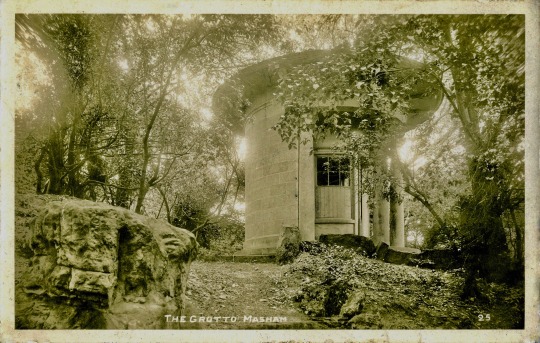
View On WordPress
#Burrill#Dydynski#George Cuitt#Grangerisation#grewelthorpe#hackfall#Julius Caesar Ibbetson#Mary Elizabeth Stevenson#masham#Nutwith#River Ure#Samuel Wrather#St Leger#Thomas Dunham Whitaker#William Aislabie#Yorkshire
0 notes
Text
Theakston Nidderdale League Gets Hawkeye
A couple of weeks ago, I was watching planes fly low over the Rufforth game, this weekend it was the feathery kind of flight that was swooping low over Killinghall's ground.

A majestic sight flying less than 30 feet above our heads as the visitors Masham CC tried to chase down the total set for them.
Perhaps the title is a little bit of clickbait...apologies! But this hunter was keeping a keen eye on all of us as it went about looking for lunch!
Rain had delayed the start of this game and ultimately reduced the total number of overs played at this small, intimate ground positioned in the heart of the village.





The home team had set about their batting task with some gusto, reaching 194 for nine in 30 overs before a quick turnaround to try and beat the rather inclement conditions.
Masham looked in the mood to overhaul the total, but found it more difficult to reach the boundaries, and there weren't as many searches for the ball in the surrounding bushes and trees during the second innings as there had been during the first.
Unfortunately, a prior engagement meant I had to leave with ten overs remaining - apologies, this isn't a normal thing I do - but it was dawning on the spectators that the visitors would fall just short and so it proved.

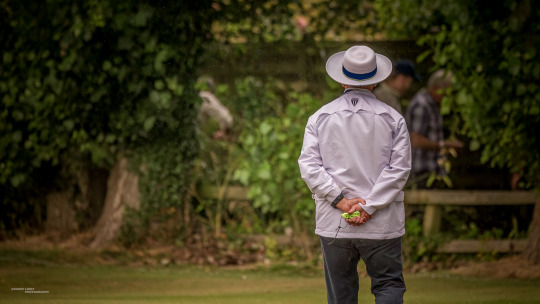

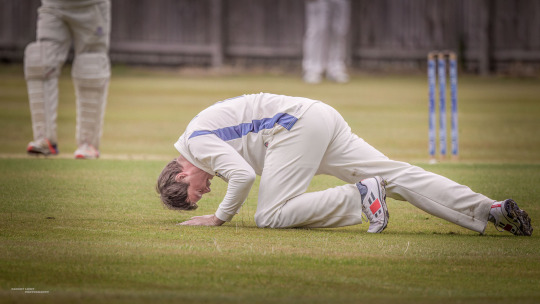

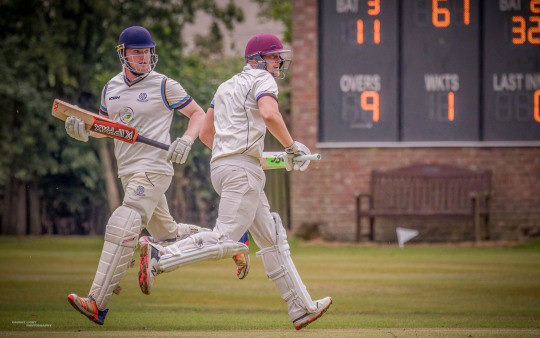



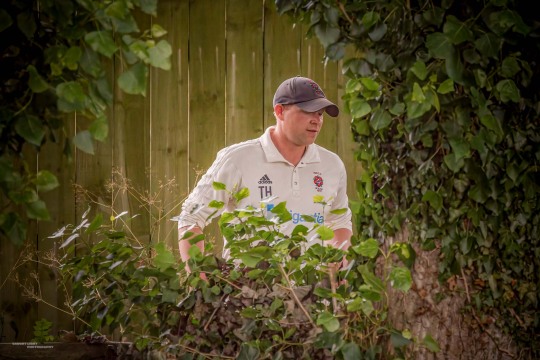
Masham finished on 163 for nine in their allotted 30 overs, with the home team winning the Theakston Nidderdale Division One league game by 30 runs.
I haven't been to this ground since before Covid...in fact it was one of the last grounds I visited in the summer of 2019 and is certainly one that I would recommend visiting.







Over the few years preceding 2019, the open views of fields from the pavilion have been replaced by a new set of houses and mean that the ground is now closed in on all sides.
One of the new neighbours has even got their own window 'impact protection system'...and I spent a few minutes watching him installing it as the Killinghall batsmen stroked the ball around the ground.


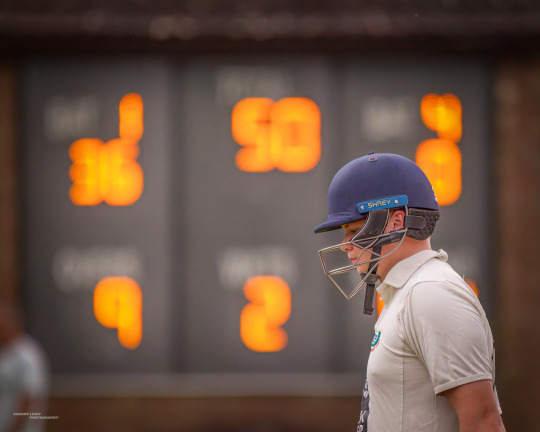




I suppose the few minutes it takes to put up the metal guards over the windows is rewarded by not having the cost of replacing broken glass on a regular basis.
The only real downside about visiting the ground is parking - which can be a challenge. I usually end up leaving the car in one of the roads nearby and walking up to the ground, but that is a minor inconvenience in the grand scheme of things.
Another good, if not slightly wet, Saturday afternoon of local sport.
#Theakston Nidderdale League#Cricket#Killinghall#Masham#Harrogate#North Yorkshire#Yorkshire#Photography#Sports Photography#Sport#Grassroots
1 note
·
View note
Text
Update on the really old GT book I've been reading,


For some reason, it keeps implying that a tiny being in a giants hands is "silly" and "babyish" and "humiliating" and I don't know if I should be offended or feel called out.
#the book is call “mistress Mashams repose” if your interested#its from 1947#its about lilliputians living on a small island and being discovered by a ten year old girl#im on chapter 11 rn and its been pretty good so far#theres some weird (racist) stuff about native Americans in the beginning#which is weird because the book takes places and was written in great Britain and doesn't have any native American characters at all#i guess its just a consequence of being a children's book from 1947 smh#it also has pretty good gt dispite the tinys being 5 to 6 inches tall#normal tags now#g/t#gt community#g/t community#giant/tiny#sfw g/t#giant tiny#g/t writing#gt writing#borrowers#liliputians#old literature
20 notes
·
View notes
Text
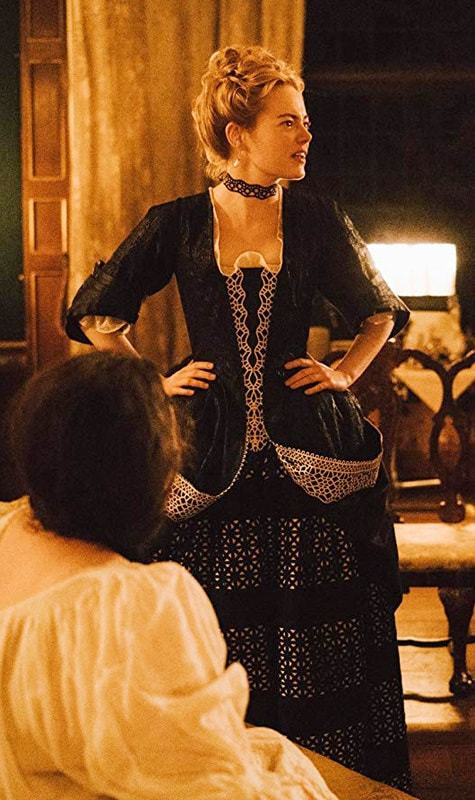
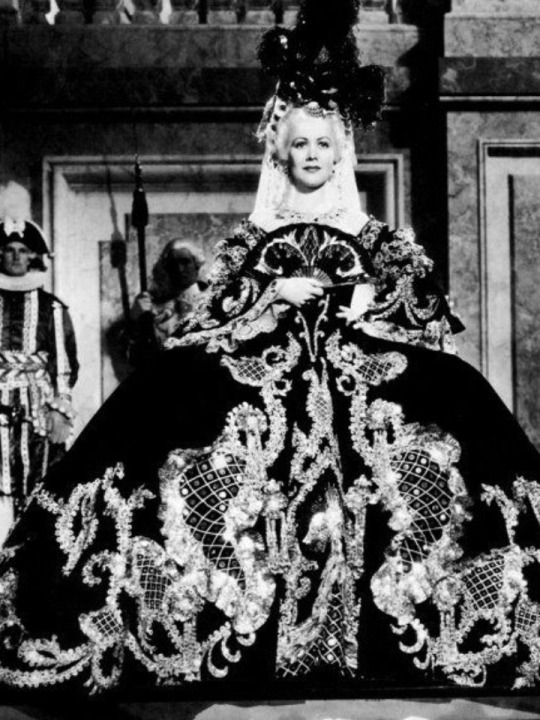
Period dramas dresses tournament: Black dresses Round 1- Group B: Abigail Hill, The favourite vs Jeanne du Barry, Marie Antoinette (pics set)
#period drama dresses tournament#tournament poll#tumblr tournament#polls#fashion poll#abigail hill#the favourite#madame du barry#jeanne du barry#marie antoinette#marie antoinette 1938#black r1#abigail masham#the favourite 2018
29 notes
·
View notes
Note
What do you think about the homosexual rumors of Henry V?
I'm generally in favour of them and do my best to perpetuate them, cf. this tag on my personal blog. But, I (sometimes) try to be a ~serious history blogger so I will endeavour to give you a more considered answer.
As a ~serious history blogger, I'd say it's probably more accurate to speak about speculation of Henry V's sexuality than "homosexual rumours". To me, "rumours" implies things contemporaneously said and recorded about Henry V and, while I would argue that there are things that may allude to his being in some way queer, there is just no evidence that explicitly, irrefutably does that or evidence that raises the possibility of his queerness in a way that has to be addressed by historians, even if they end up denying the possibility of queerness or can't definitively say whether he was or wasn't queer. This doesn't mean there is no possible way Henry V could be queer, only that it's one of those things that we don't and can't know for certain.
Medieval Attitudes to Sexuality
We don't have a lot of evidence of specific individuals engaged in same-sex behaviour in medieval England and what evidence that exists is generally from when people were outed (often in a legalistic sense) or in the form of political smears. In the latter case, we have no idea of these smears had some element of truth in them. Both Edward II and Richard II, for example, were linked explicitly with sodomy by their contemporaries. While today we associate sodomy with a specific sexual act (anal sex), in the Middle Ages it encompassed a whole host of sexual sins and was often invoked in non-sexual discourses to suggest something was "against nature". In the case of Edward II and Richard II, sodomy was invoked alongside a narrative that they were ruled or lead astray by their unworthy favourites - when as kings, they should have been the ones who did the "ruling". This genre of criticism has been labelled discursive sodomy. We can't and don't know whether they did or did not have a romantic and/or sexual relationship with their favourites or what "sodomy" their accusers imagined or believed they had committed but in the case of Edward II, at least, the appearance of the (untrue) narrative that he was murdered by the insertion of a red-hot poker into his anus not too long after his death heavily implies that not all of his contemporaries and near-contemporaries viewed the allegation of sodomy to be purely political or unlinked to same-sex behaviour. If you're interested in a discussion getting into the specifics of Richard II's sexuality, I'd recommend this post by @shredsandpatches
Another issue with the discussion of medieval sexuality is medieval attitudes to sexuality were very different from our own. Our modern categories of sexual orientation (e.g. homosexuality, asexuality, bisexuality, heterosexuality, etc.) did not exist in the Middle Ages. Of course, this doesn't mean that everyone was therefore heterosexual and no one experienced and/or acted on sexual attraction in ways similar to these categories describe, just that they didn't conceptualise and categorise sexuality in the ways we do. Some sexuality historians avoid using these terms, viewing them as what W. Mark Ormrod, when discussing Edward II, described as both anachronistic and futile:
anachronistic because medieval attitudes to sexuality were so different from our own, and futile because the nature of the evidence makes it impossible to tell what Edward actually did – let alone what he thought himself to be doing – whether and when he engaged in emotional and physical contact with women or men.
Personally, I don't have issue with using modern sexuality categories in casual settings or as a quick shorthand, but when I'm pretending to be a ~serious history blogger, I try to follow that viewpoint and use the word "queer" because it encompasses a whole range of experiencing sexuality and gender without tying it to the very specific and very modern identities that weren't available to the people I'm discussing
We also have to be careful when discussing medieval sexualities for two more reasons. One: we understand and accept today that an individual's sexuality is determined by how they experience sexual attraction but we rarely, if ever, have access to a medieval person's inner thoughts to know how they experienced sexual attraction and can only go off sexual behaviour, where the evidence unsurprisingly skews heavily towards to relationships between men and women. We know that people can and do have sex in ways that don't "fit" with their sexual orientation for a variety of reasons - they might be closeted, experimenting, figuring out their sexuality or trying to have children - and we need to recognise that this could be the case for at least some medieval people. Two: what we today might view as sexual behaviour, such as kissing or sharing a bed, wasn't necessarily sexual to a medieval eyes, and we need to ground our conclusions in their context.
So, with that lengthy preamble but very basic introduction to medieval sexuality and its problems over, let's move onto Henry V.
Henry V's Sexualities
Discussion of Henry's sexuality have two additional problems. Firstly, Henry's reputed wild youth has often been assumed to have been both sexual and heteronormative - i.e. he had a lot of sex with a lot of women - and this isn't aided by the fact that historical Henry is often conflated with Shakespeare's wild prince Hal, whose wildness is also often generally assumed to be both sexual and heteronormative and who is often depicted as having casual sex with women*. Secondly, Henry's reputation as a great warrior king has meant that, as Katherine J. Lewis notes, his gender is often seen to have been so normative and idealised as to be invisible and in need of little scrutiny and I would argue the same is true for his sexuality (excepting revisionist takes by historians such as Ian Mortimer, who treats Henry's sexuality as monstrously other).
I know that what I'm about to write will have someone wanting to jump in and get all "BUT" and "well, actually" so three disclaimers:
It is very difficult to know for certain whether two men (or two women) actually had sex 600 years ago - and impossible if we don't have explicit evidence (which we rarely do). However, just because we lack evidence does not mean everyone was "straight". The stigma around same-sex behaviour means that we would expect a paucity of evidence, which we have. Additionally, we need to be aware of what Ruth Mazo Karras calls the "double standard of evidence" where men and women are often assumed to be lovers despite a lack of evidence, but the possibility of women and men engaging in same-sex behaviour requires explicit evidence of genital contact.
As I've already said, there is nothing that is clearly suggestive of Henry V engaging in same-sex behaviour. He was not linked explicitly with sodomy, despite the broadness of the term, and nor do we find him depicted as a king unreasonably attached to an unworthy favourite. Firstly, it is reasonable to assume that more queer people existed than what we have evidence for. Secondly, the narrative of queer kings as kings ruled by their favourites is a stereotype, born from discursive sodomy, and it is entirely possible that this allowed for queer kings who didn't (or who weren't made to) embody the tropes of discursive sodomy to go under the radar.
"But we have all these stories about Henry V's wild youth where he was having sex with loads of women and the epic romance with his wife." I will get into this more detail below but we should probably view such claims sceptically. Secondly, the evidence of "sex with lots of women" is actually very limited.
* There are a number of queer readings of Shakespeare's Hal but these are rarely leave academia to end up on stage or screen. There are three retellings of the Henriad that depict a queer Hal: My Own Private Idaho, Tessa Gratton's Lady Hotspur and Allen Bratton's Henry Henry.
Speculation
The arguments that I've seen put forward to suggest that Henry engaged in same-sex behaviour come from three different types of evidence:
Preferring the Company of Men. Henry married late and spent most of his reign on campaign and with men, away from women. His court was also lacking in women.
Sharing a bed with Scrope. Henry, Lord Scrope of Masham was known as Henry's bedfellow which means they were lovers.
Sharing a tomb with Courtenay. A story circulated that Henry's close friend, Richard Courtenay, was buried in the same tomb as him, which suggests they were lovers.
Neither of these are a smoking gun, the first two for fairly obvious reasons, and the third because Courtenay is not in the same tomb as Henry.
Preferring the Company of Men.
It is true that Henry married late but if Henry's sexuality did play any kind of role in the delay, it was in a very minor role. We know that his marriage had been considered since 1395, when John of Gaunt negotiated for his marriage to Marie, the daughter of the Duke of Brittany and when Richard II proposed he marry Michelle de Valois, daughter of Charles VI of France. We also know that he was the subject of multiple marriage negotiations in Henry IV's reign - at first with Isabelle de Valois (daughter of Charles VI, Richard II's widow), Catherine of Pomerania (sister to Erik of Pomerania, King of Norway, Denmark and Sweden), an unnamed daughter of Charles VI, Catherine de Valois, and one of the daughters of the Duke of Burgundy (I don't think a name was ever specified). These never eventuated for various political reasons. The delay in his marriage when Henry became king was likely due to seeing his marriage to a French princess as a necessary part for any long-term peace with France (regardless of how he truly envisioned the form that peace would take). I don't think we can argue that Henry's behaviour here was because of a lack of sexual interest in women, but simply because negotiations fell through and because, in the end, the marriage to Catherine was deemed a vital part of his plans with France.
It is true that Henry's court was primarily a homosocial environment but that was the way courts were "supposed" to be (Richard II, for instance, was heavily criticised for having too many women at court and for combining his household with his first queen's). It is also true that by the time Henry came to the throne, the majority of his female relatives who might be expected to play a role in his court were either dead or living overseas, having made advantageous marriage alliances arranged by Henry's father and grandfather. Ian Mortimer's assertion that Henry barred Joan of Navarre and Margaret Holland, Duchess of Clarence from his court on basis of his dislike of Joan and of Margaret's husband, is simply without foundation, and indeed they played important, visible roles in his reign, both at court and away from court, until Joan's arrest on treason charges and Margaret's widowing. Given the tendency for chroniclers to elide the presence of women, it's also possible that other women were at court but their presence went unrecorded and there are at least four who should probably be considered as influential figures in Henry's reign: Joan de Bohun, Countess of Hereford, Elizabeth of Lancaster, Countess of Huntington, Joan Beaufort, Countess of Westmorland and Philippa de Mohun, Duchess of York.
Sharing a bed with Scrope.
As I mentioned above bed sharing was not seen as a solely sexual act and it often occurred as a gesture of trust, affection and intimacy between men. I also don't believe that chroniclers that often implied sodomy rather than explicitly naming it would casually reference the king having sex with his male best friend. In Scrope's specific case, I'm only aware of his sharing a bed with Henry as being recorded by Monstrelet, which raises the question of how a Burgundian chronicler knew they shared a bed but not one English chronicler knew about it to make mention of it. Likely, Monstrelet was invoking bed-sharing to show the intimacy of their relationship, borrowing from the English narratives that depicted Scrope as a deeply trusted friend of Henry who then callously betrayed him.
Now, there are some things to note. The first is that just because Monstrelet is the only chronicler (afaik) to reference the bed sharing does not mean that Henry and Scrope didn't share a bed (and if Scrope was as close to Henry as the chroniclers imply, there's a good chance they did). The second is that while bed-sharing was not primarily seen as sexual, it doesn't preclude the possibility that sex did occur between two members of the same sex sharing a bed. Thirdly, despite not mentioning the bed-sharing, chroniclers often invoked a highly intimate relationship between Scrope and Henry. Here's Thomas Walsingham on Scrope:
He was so highly regarded by the king that discussions on private or public matters were usually brought to an end by his verdicts. For in all his actions he showed such a restrained gravity and sanctity that the king judged that all his pronouncements should be carried out just as if they were oracles fallen from heaven. If an important embassy had to be sent to France, the king thought that Henry Scrope was the man who had the ability to perform this task.
This, to me, seems to invoke the trope of the unworthy favourite who has an unreasonable hold on the king. Perhaps Scrope was the most unworthy of the late medieval favourites: his betrayal of Henry was an actual betrayal instead of the image of a "loving knight serving his lord with his body and sword" twisted into treason by his enemies.
Sharing a tomb with Courtenay.
At some point after October 1953 when the grave of Richard Courtenay, Bishop of Norwich was rediscovered in the chapel of St Edward at Westminster Abbey, a story circulated that Courtenay's remains were found inside Henry's tomb, which led to speculation that that they had been lovers. Obviously, this doesn't prove they had sex but it is a quite unusual gesture, suggesting a great degree of intimacy. This same intimacy is apparent in the small number of double-tomb monuments commemorating two individuals of the same-sex (e.g. Sir William Neville and Sir John Clanvowe, Elizabeth Etchingham and Agnes Oxenbridge), and Jessica Barker notes that while we don't/can't know if the couples were lovers, their joint burial and memorials do mark a "significant moment in in queer history because they present same-sex relationships as analogous to married couples". Courtenay has no memorial in the chapel, much less one that impales his arms with Henry's as is the case with Sir William Neville and Sir John Clanvowe, but Henry's gesture of sharing his tomb space with Courtenay is deeply unusual and suggests a great deal of affection and intimacy.
Unfortunately, the story just isn't true. As far as I could find, Henry's tomb has never been opened which means that Courtenay's remains can't have been discovered alongside his. There is also a fair bit about Courtenay's grave that has been made public. Westminster Abbey displays the ring they found in his grave, Lawrence Tanner records the discovery in his memoirs, and a couple of articles about St Edward's chapel published archaeological drawings of Courtenay's grave and remains that show he was buried alone and his tomb is located under the steps of the northern turret of Henry V's chantry chapel.
There is still something very telling about Courtenay's place of burial. St. Edward's chapel was, quite simply, an exclusive burial space. It was where almost every single king and queen of England between Henry III and Henry V were buried and those few burials that didn't belong to monarchs were often quite closely connected to the royal family or from an earlier period. Space was also becoming tight - Henry VI struggled to find a place for his own burial (which never eventuated due to his deposition and murder) and the lack of space was probably why Edward IV chose to be buried at Windsor (and possibly why Henry IV chose to be buried in Canterbury Cathedral). The closest, albeit imperfect, parallel to Courtenay's burial in the chapel was that of John Waltham, Bishop of Salisbury - who had been buried there on Richard II's orders, causing outrage that a man of common blood should be buried amongst kings. Courtenay was of noble descent but not of the highest echelons of society, let alone closely related to the royal family. Why then did Henry order Courtenay's burial in such a prestigious place, risking scandal and outrage?
We can say a little more about Courtenay, too. He seems to have been implicitly trusted by Henry. Walsingham's statement about Scrope, that Henry thought Scrope should head all important embassies to France? Isn't quite correct. Scrope didn't lead any of the principal embassies to Paris - Courtenay did, "perhaps," Jeremy Caton writes, "because he knew the king’s mind better than his colleagues." The Gesta Henrici Quinti, which is was written by a chaplain in Henry's household and largely believed to be part of Henry's propaganda, details the moment of Courtenay's death, "in the presence of the king who, after extreme unction, with his own hands wiped [Courtenay's] feet and closed his eyes". The closest parallel to Henry's handling of Courtenay's corpse that has survived appears to be Richard II's touching of Robert de Vere's corpse when it was returned to England for burial.
Obviously, none of this "proves" that Henry and Courtenay were lovers or that Henry experienced and engaged in same-sex behaviour. But it does suggest the possibility.
I discussed this in more detail on my personal tumblr but without pretending to be ~serious history blogger sometime ago and I keep meaning to write a serious version of that post and one specifically about the account of Henry attending to Courtenay on his deathbed.
The Wild Youth and the Wife
To begin with, sexual attraction does not always operate on a binary. People can be attracted to one gender or they can be attracted to more. Nor does sexual behaviour, as I said above, necessarily indicate how one experiences sexual attraction. So it is entirely possible that Henry could have sex with women and still be sexually attracted to men and vice versa. One does not necessarily preclude the other.
The Wife
I've already written a simply massive post detailing the evidence of his relationship with Catherine de Valois. The reality is that we don't and can't know what their relationship was like. The framing of their marriage as a romance is, simply put, a myth. It was a standard marriage for their class and situation and we should not rely on the stories that Henry fell instantly in love with Catherine upon seeing her portrait or hearing his ambassadors report on their meeting with her. These are tropes out of courtly romances and fairy tales.
If we try to determine anything about their sex life from the surviving evidence of their marriage, we run into trouble. We don't have access to their bedchamber to know when they had sex or what they felt about the sex they did have. The only explicit evidence of their sex life is that it resulted in a son. I don't say this to conclude "and therefore they only had sex the one time" - I would be very, very surprised if that's the case. The point is, however, that the marriage is not proof of Henry's "straightness".
The Wild Youth
I've also written a bit about the story of Henry's "wild youth". Two Latin lives written in the mid-to-late 1430s explicitly invoke Henry's sex life, such as the Vita et Gesta Henrici Quinti (translated here by Anne Curry):
an assiduous pursuer of fun, devoted to organ instruments [an intentional double entendre] which relaxed the rein on his modesty, although under the military service of Mars, he seethed youthfully with the flames of Venus too, and tended to be open to other novelties as befitted the age of his untamed youth.
For some historians, this is proof that Henry had a lot of casual sex with women. Others cite two reports by contemporaries (Richard Courtenay himself and the Earl of Ormond) who claim that after his coronation, Henry did not have sex with women after coming to the throne as evidence that it was notable to what came before. Ian Mortimer even speculates that Henry had "an unfortunate experience [that] left him fearing women as sexual beings" that resulted in this turnaround.
However, we have no explicit evidence beyond these two Latin lives that imagined Henry "seeth[ing] youthfully with the flames of Venus" for Henry's youthful indiscretions. There is not the slightest hint of an illegitimate child, nor is there any woman we can link to Henry in a plausible sexual relationship. There are also no surviving criticisms of lecherous behaviour or that his court as Prince of Wales was a hotbed of debauchery - we find similar criticisms for the likes of Edward III, Richard II, Edward IV and Richard III, and for Henry's brother, Humphrey, Duke of Gloucester.
This, of course, doesn't prove or mean that Henry didn't have sex with women during this time. It could just be that the evidence doesn't survive. Although some medieval mistresses are incredibly famous, most are unknown - Henry's brothers had five known illegitimate children and we don't know who the mothers were for any of them. It's also possible that Henry's sexual relations with women were on a strictly casual basis, that he was unusually lucky with the highly unreliable forms of birth control or that any illegitimate children that he fathered died young enough that they left no mark on the historical record. It's also possible that if he was having sex, perhaps he wasn't having sex with women. The apparent gap between the comments on Henry’s sex life and the lack of evidence could be read suggestive of something unspeakable – a vice that medieval people considered too horrible to be named. It's also tempting to see a link between the invocation of Venus and Thomas Walsingham's complaint that Richard II's favourites were "knights of Venus rather than of Bellona", a war goddess.
It's also possible that his sex life was simply unremarkable. The comments about Henry's sex life might simply be, as has been suggested, a cover for Henry's conflicts with his father. They may have been a cover for suspicions that he harboured Lollard sympathies.
Henry's Sexualities
As I've outlined, we simply don't know how Henry experienced sexual desire and attraction to know whether he was queer or straight. I can see the possibility that he was queer, that he had romantic and/or sexual relationships with Courtenay or Scrope.
I have also wondered if he experienced little to no sexual attraction or had little interest in sex. If we take the statements that he was abstained from sex between his coronation and his marriage at face value, if we take the lack of concrete evidence for his "seething in the flames of Venus" at face value, it's possible to read him as experiencing sexual attraction in a way similar to asexuality.
My thoughts are, in short: that we don't and can't know but there is the possibility of queerness there.
Sources:
Gesta Henrici Quinti (c. 1417), eds. and trans. Frank Taylor and John S. Roskell (Oxford University Press 1975)
The Chronica Maiora of Thomas Walsingham, trans. David Preest (The Boydell Press 2005)
The First English Life of Henry V, ed. C. L. Kingsford (Clarendon Press 1911)
The Chronicles of Enguerrand de Enguerrand De Monstrelet, Volume 1 of 2, trans. Thomas Johnes, 1840.
Henric Bagerius and Christine Ekholst, 'Kings and favourites: politics and sexuality in late medieval Europe', Journal of Medieval History, 43:3 (2017)
Jessica Barker, Stone Fidelity: Marriage and Emotion in Medieval Tomb Sculpture (The Boydell Press 2020)
Judith M. Bennett, History Matters: Patriarchy and the Challenge of Feminism (University of Pennsylvania Press 2007)
Judith M. Bennett, "Remembering Elizabeth Etchingham and Agnes Oxenbridge", The Lesbian Premodern, eds. Noreen Giffney, Michelle M. Sauer, Diane Watt (Palgrave 2011)
Jeremy Caton, “The King’s Servants”, Henry V: The Practice of Kingship, ed. G. L. Harriss (Oxford University Press 1985)
Anne Curry, Henry V: From Playboy Prince to Warrior King (Penguin Monarchs 2015)
R. G. Davies, “Courtenay, Richard” in Oxford Dictionary of National Biography (2004)
Sylvia Federico, "Queer Times: Richard II in the Poems and Chronicles of Late Fourtheen-Century England", Medium Ævum, vol. 79, no. 1 (2010)
Ruth Mazo Karras, Sexuality in Medieval Europe: Doing Unto Others (Routledge 2017)
Ruth Mazo Karras and Tom Linkenen, “John/Eleanor Rykener Revisited", Founding Feminisms in Medieval Studies: Essays in Honor of E. Jane Burns, eds. Laine E. Doggett and Daniel E. O'Sullivan, (D. S. Brewer 2016)
Katherine J. Lewis, Kingship and Masculinity in Late Medieval England (Routledge 2013)
Peter McNiven, "Prince Henry and the English Political Crisis of 1412:, History, vol. 65, no. 12 (1980)
Peter McNiven, Heresy and Politics in the Reign of Henry IV: The Burning of John Badby (The Boydell Press 1987)
E. Amanda McVitty, ‘False knights and true men: contesting chivalric masculinity in English treason trials, 1388–1415′, Journal of Medieval History, 40:4 (2014)
Robert Mills, Seeing Sodomy in the Middle Ages (University of Chicago Press 2015)
Ian Mortimer, 1415: Henry V's Year of Glory (Vintage 2010)
W. Mark Ormrod, "The Sexualities of Edward II", The Reign of Edward II: New Perspectives, eds. Gwilym Dodd and Anthony Musson (York Medieval Press 2009)
Lawrence Tanner, Recollections of a Westminster Antiquary (John Baker 1969)
Tim Tatton-Brown, “The Pavement in the Chapel of St Edward The Confessor, Westminster Abbey”, Journal of the British Archaeological Association, 153:1 (2000)
#henry v#richard courtenay bishop of norwich#henry scrope lord masham#ask#anon#sex and sexuality#god ok i'm done with this and am taking a break from responding to asks i'm aware that i've got more to answer#but i need to have a life and do stuff for me
15 notes
·
View notes
Note
Disney was going to adapt another TH White novel called Mistress Masham's Repose where a girl escape an orphanage and found Lilliputians. They cancelled it because they don’t want it to flop and they found its plot similar to The Rescuers. So it exist in the DisneyVerse? There is concept art:
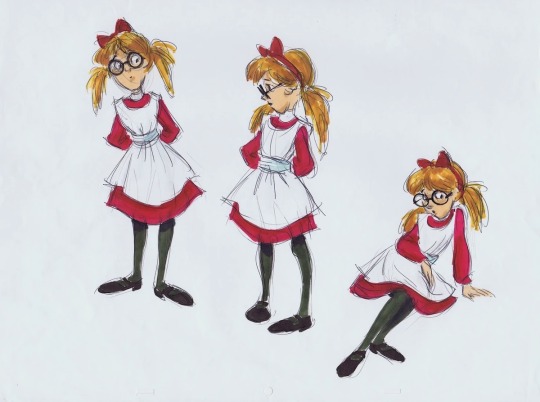
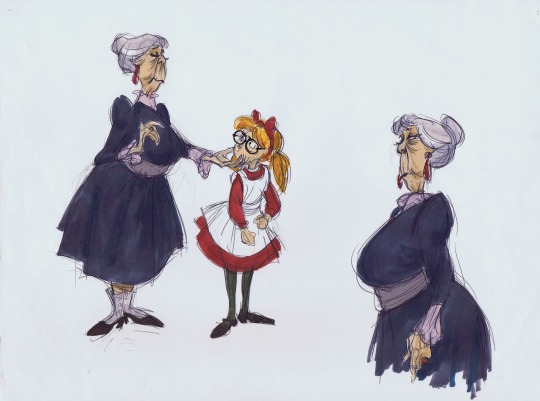
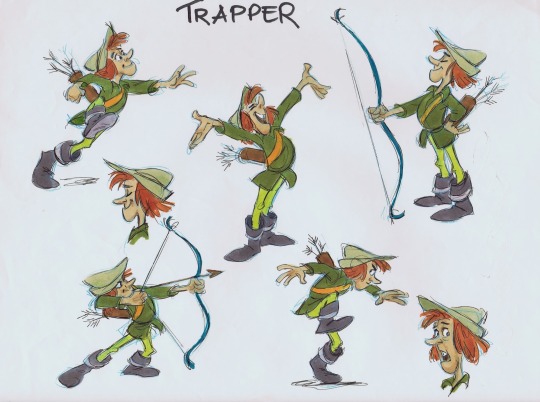

I've heard of this before yeah! I don't know if it would exist in my DisneyVerse, I'd like to find the original book somewhere and read it so I can get a better feel for the plot before I decide. But the concept art does look fun!
#asks#disney#disneyverse#deleted disney#canceled disney#mistress masham's repose#th white#disney concept art
49 notes
·
View notes
Text

The Favourite (2018, Yorgos Lanthimos)
19/12/2024
#the favourite#2018#yorgos lanthimos#olivia colman#emma stone#rachel weisz#91st Academy Awards#72nd British Academy Film Awards#golden globe awards#Academy Award for Best Actress#Golden Globe Award for Best Actress in a Motion Picture Musical or Comedy#Volpi Cup for Best Actress#1708#Kingdom of Great Britain#War of the Spanish Succession#Anne Queen of Great Britain#Sarah Churchill Duchess of Marlborough#Keeper of the Privy Purse#Sidney Godolphin 1st Earl of Godolphin#John Churchill 1st Duke of Marlborough#Robert Harley 1st Earl of Oxford and Earl Mortimer#tories#Abigail Masham Baroness Masham#Poultice#Gout#Lesbian#Lady of the Bedchamber#Tea#brothel#Parliament of United Kingdom
4 notes
·
View notes
Text
Our natures are so suited to a middle course in all things that we cannot exceed in any way with complete safety. We cannot bear to be always busy in the affairs of the world, or always shut away from them; always company and always solitude are both dangerous; and so are any other extremes.
from Discourse Concering the Love of God by Damaris Masham (1696)
#discourse concerning the love of god#discourse#the love of god#love of god#love#god#damaris masham#human nature#the middle way#middle way#excess#safety#busy#the world#world#shut away#always company#company#always solitude#solitude#dangerous#extremes
2 notes
·
View notes
Text
Strike shenanigans at Masham.




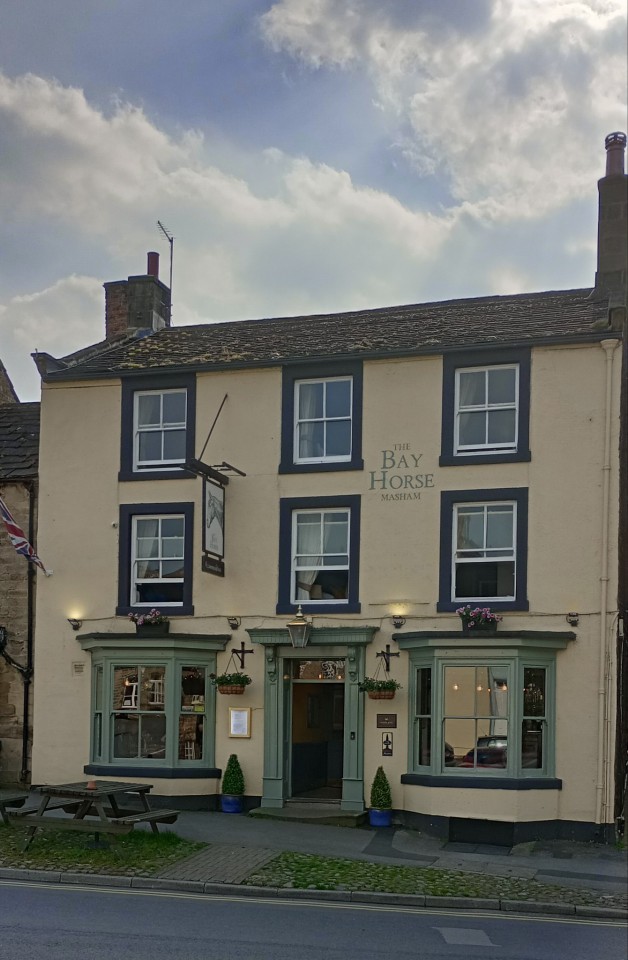
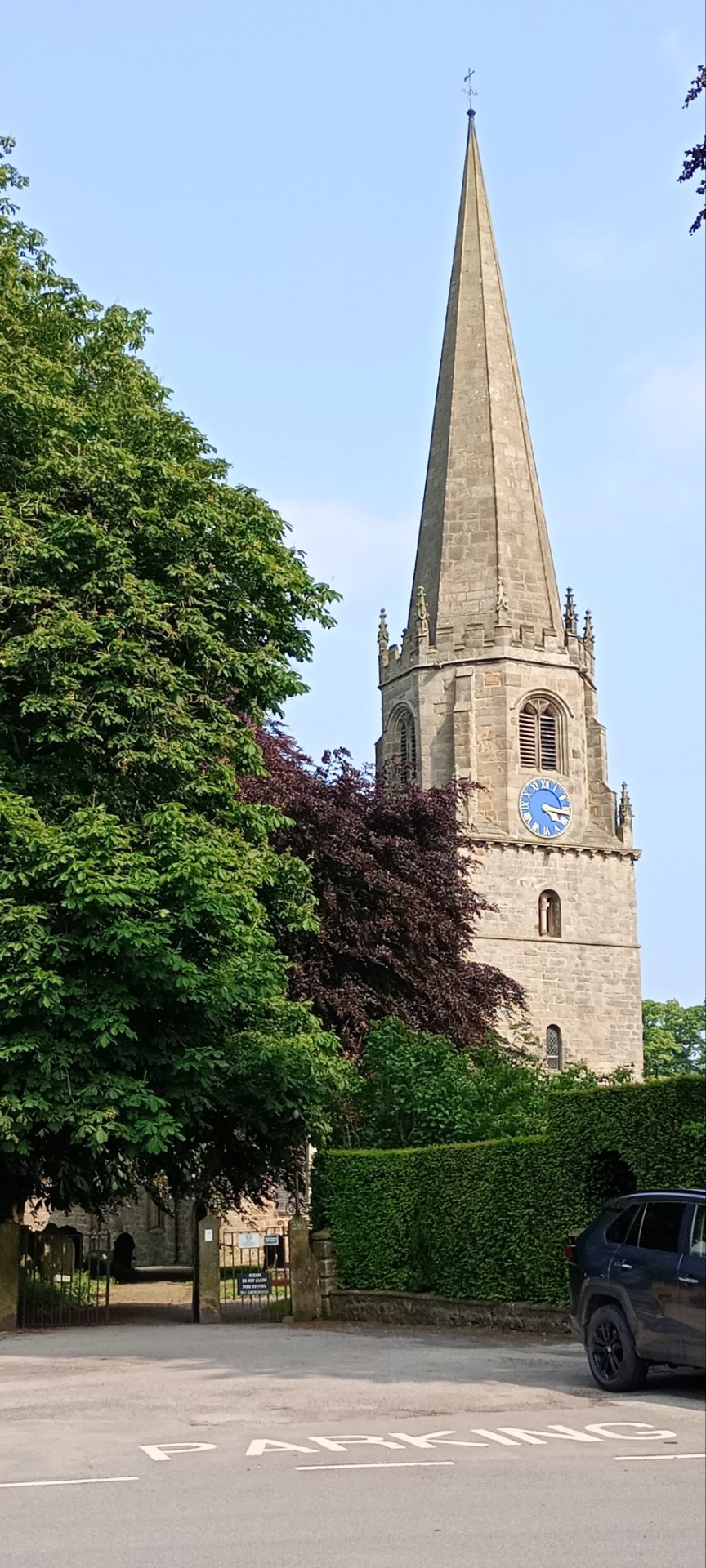

Fuck it! 😁

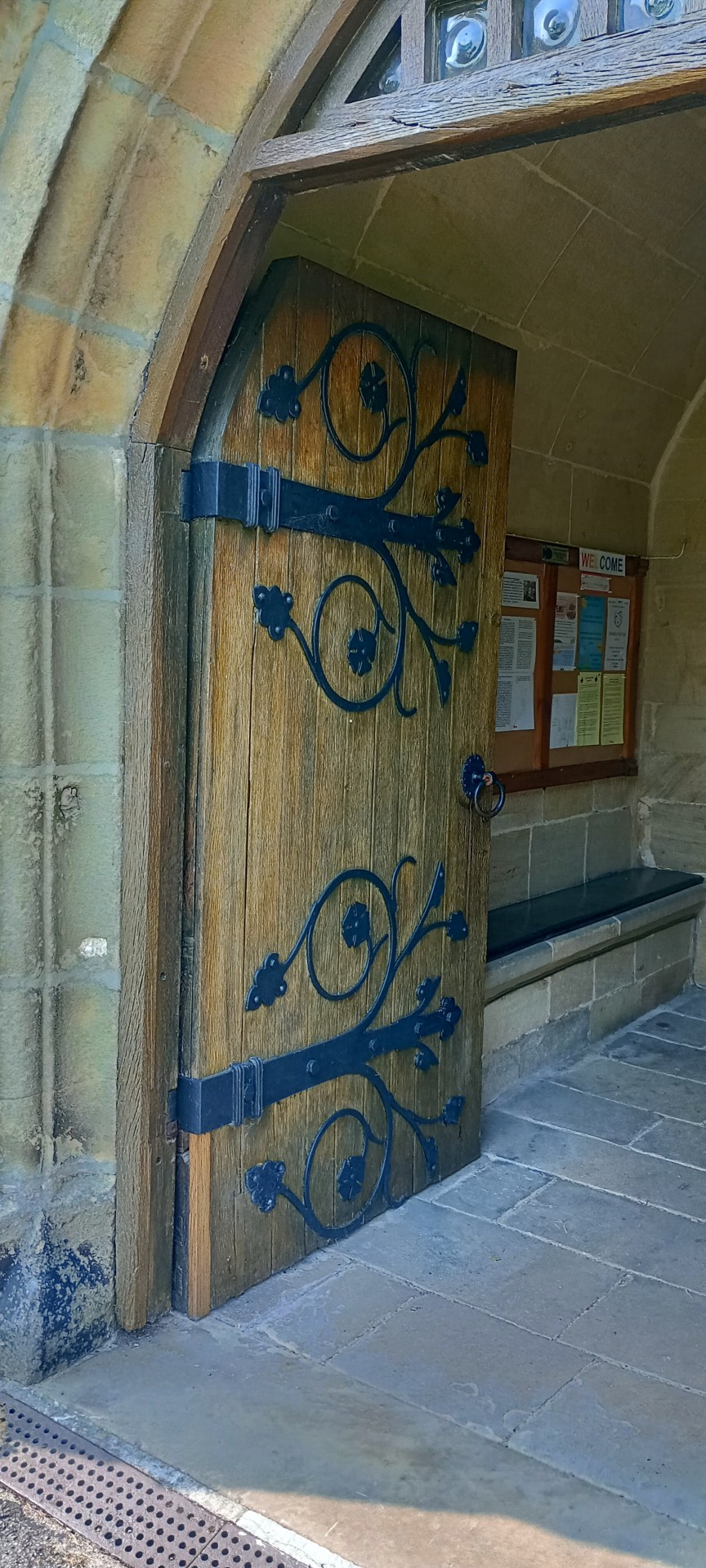
12 notes
·
View notes
Text


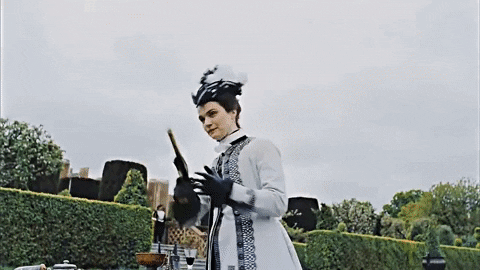

Movie / Show alphabet -> F
The Favourite (2018)
Genre: Historical, Satire, Dark Comedy
3 notes
·
View notes
Text
Was about to ask if anyone in the Henry V fandom ships Harry and Lord Scrope of Masham, but then I saw this post and apparently they were bedfellows, so that answers my question 😂
1 note
·
View note
Text
The Favourite
I really didn't like the movie.
I don't think it was historical genuine. I don't understand how a Queen (like Anne) can be manipulated as easily as that.
Otherwise, the tactical strength of power between the two cousin is very interesting.
I don't understand Abigail wasn't attracted by her husband?
Some quotes:
"- Must you rub it in? (prime minister) - A man's dignity is the one thing that holds him back from running amok. Sometimes a lady likes to have some fun." (Sarah)
"- Of course. You are in favour. But favour is a breeze that shifts direction all the time." (Sarah)
"- Have you come to seduce me or rape me? (Abigail) - I am a gentleman. (Masham) - So rape, then." (Abigail)
"- Your tongue seems uncharacteristically still." (Anne)
"- Obviously, you still have some anger to expiate. I'll allow it this once." (Anne)
0 notes
Text
Exactly what I thought. The whole "you look like a badger" scene seemed like she preferred Anne didn't go meet the ambassador and send her instead so she could gain more power.
Both Sarah and Abigail were manipulative in that film - actually, everyone except Anne was!
And Anne was plagued by ill health and heartbreak over losing all her family either to religious differences or death, I'm surprised she didn't go mad because I would have went insane a long time ago if it were me.
I mean, even if Sarah Churchill did love (not just romantically or sexually or platonically but LOVE, RESPECTFUL LOVE…over and above simple deference to a sovereign) Queen Anne, I don’t think I would call Sarah’s cruelty towards Anne ‘honesty.’ The Favourite certainly didn’t position it this way, at least I didn’t get that vibe. When Sarah says that her spite was merely the honesty that comes as a trapping of love, it wasn’t true. She had behaved horrifically, sometimes. And this is true to life, this is one of the reasons Anne came to unseat Sarah in the first place; because she was tired of being cut down in public, called pathetic for grieving for her children etc. Now, I love Sarah and in the film, she was even more compelling. But her jibes came from a not very nice place…she was a bully.
And I think, ultimately, the movie came to the same conclusion I have come to from reading about Anne’s life: regardless of her sexuality and her obvious longing for a woman that truly reciprocated her love, what Anne really wanted in her life was all the children she lost. I think that’s who she misses at the end of the movie….hence why the rabbits take hold of the whole screen. Sarah is merely another person who has left her and become dead to her, and Abigail is on the brink of becoming dead to her. Anne was so tired on her deathbed, physically and mentally. It was said that no one had ever welcomed death as much as she did. The loss…it just built up.
#anne queen of great britain#sarah churchill#abigail masham#the favourite#we have a pretty witty queue
199 notes
·
View notes